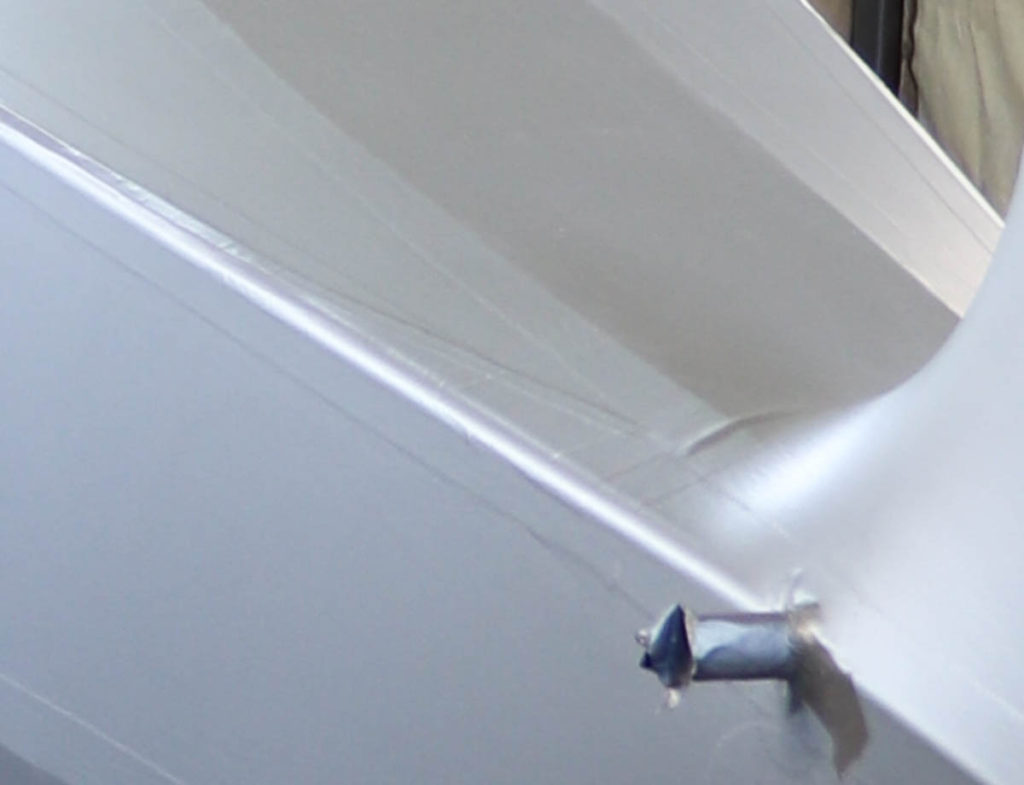When I started this project my major concern was to produce an airworthy airplane. Over time I have learned that airworthy is relatively easy, but restoring a showpiece is another story.
I have decided that my Taylorcraft will turn out to be airworthy and nice, but it will not be a showpiece. I made two decisions that will limit how nice my plane will look:
- I decided to use fabric envelopes instead of blankets. This is absolutely allowed and it is a slightly faster method, but it has “sewn seams” that will always show up. They are too thick to hide, even after covering them with finishing tapes and gussets, there is no Poly-Spray and sanding that can hide them. If you use blankets, and you glue, the final result will look better. In the figure below you can see a couple of seams. Appendix B of the Poly Fiber manual discusses the pros and cons.
- I was late in picking the final color scheme and the color process. In the beginning, I did not understand the difference in painting fabric and metal and the limitation that the Poly-fiber STC poses on paints. When I decided to use Ranthane it was too late: I already painted the fuselage using another paint, that is legal on metal, but the color match will not be perfect. I could have used Ranthane to paint the fuselage and obtained a better result.

My wife says that I am too picky and that the plane will turn out nice, and she is right, but there is a lot of work in restoring an antique and a couple of different decisions at the beginning would have produced a better result.
Please Read and Understand the Legal Disclaimer

